Various problems in health, skin, weight, happiness sooner or later cause a person to think about proper nutrition. Proper nutrition is not always a strict diet, not a lack of good substances in the diet, not exhausting yourself. This is a way of life that needs to be approached consciously.
healthy eating- this is the basis on which to build a general healthy and active state of the body, excellent mood, external attractiveness and performance.
Principles of proper nutrition
Proper nutrition is based on the following principles:
- Diverse diet. To lose weight, you don't need to just eat kefir and cucumbers! The menu must be delicious, healthy, varied.
- Power part. Daily calorie intake should be divided into three meals and one or two snacks. Breakfast - 30%, lunch - 35%, dinner - 25%, two snacks - 10%. There are cases where a person is assigned to eat three strict meals a day, for example, in the case of disorders of carbohydrate metabolism, with insulin resistance. And in some cases, such as adrenal fatigue syndrome, where five meals a day is necessary, fasting will do more harm than good.
- Most of the menu should be natural products, without artificial additives, sugar and sweeteners.
At the same time, the diet must be consistent with the norm of calories, protein, fat, carbohydrates, if in addition to switching to a reasonable diet, you have the task of regulating your weight.
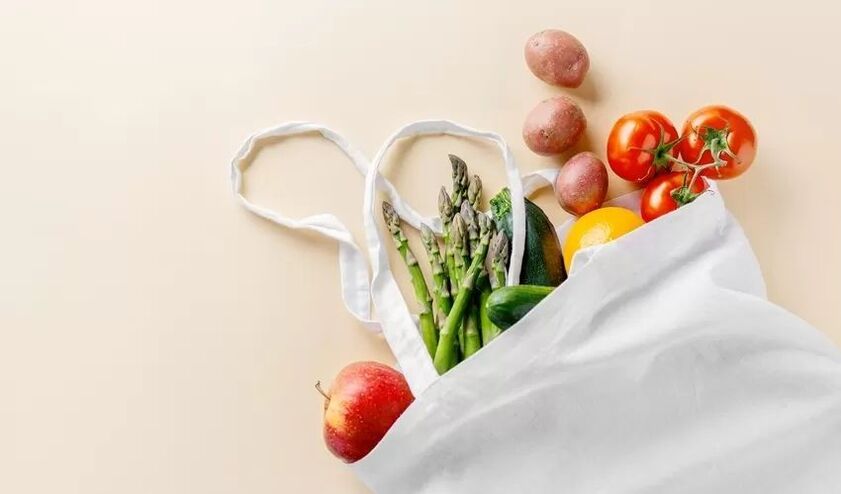
There are some other principles that will help change your diet for the better. :
- drink enough clean water (at least 2 liters per day);
- eat when he starts to feel hungry - it is very important to eat exactly when you are hungry, preferably without snacking, to prevent insulin resistance, ideally - three meals a day;
- chew each bite thoroughly, and even more so, eat slowly, consciously, chewing with a fork aside;
- eat in a calm state;
- focus on the process while eating;
- eat, preferably with both feet on the floor;
- actively moving during the day - at least 10, 000 steps per day have not been canceled;
- eat freshly prepared food;
- eat plenty of fiber - fresh fruits and vegetables;
- Eat fish at least 2 times a week to get omega 3 fatty acids from your food.
How to start the transition to proper nutrition
The transition to a new type of nutrition involves five steps:
- Eliminate unhealthy foodscontain so-called "empty calories". These are cakes, confectionery, candies, sausages and semi-finished products, mayonnaise, sauces.
- Eliminate alcohol. Some studies show that such drinks affect nerve cells in the brain responsible for appetite. The more a person drinks, the more they eat. In addition, drinking alcoholic beverages is often accompanied by snacks and snacks, which is very undesirable.
- Monitor water balance. Every day you need to drink at least 1. 5 liters of purified water. The approximate ratio is calculated by the formula: 30 milliliters per kilogram of ideal weight.
- Make a diet. As mentioned, it is necessary to divide the daily calorie intake into several meals. For everyone, set the most convenient time and stick to it. The schedule should be roughly the same for all days.
- Gain strength and patience. Transitioning to a new lifestyle can be challenging.
In fact, the process of changing habits is extremely complex. The usual advice won't help. Don't read weight loss reviews on the Internet about miracle diets. In fact, only two percent of people are able to lose weight without harm to their health, at home. In all other cases, qualified help from weight loss specialists is required. These are nutritionists, psychologists, and personal counselors.
List of reasonable nutritional products
When making a healthy eating plan, be sure to include the following products in the menu:
- Sea fish and seafood. Fish oil reduces the risk of cholesterol plaque formation, heart attack and stroke. The presence of fish in the diet improves the condition of hair and nails. Omega 3 fatty acids are structural components of cell membranes. They are necessary for the plasticity and fluidity of cell membranes. The cardiovascular system and brain are the first affected organs when Omega 3 fatty acids are deficient, as they need DHA the most (DHA content is highest in the brain, especially gray matter). The brain cell membrane lacks plasticity leading to reduced cognitive ability, psycho-emotional disorders.
- Egg. Prevents stomach ulcers, pancreatitis and disorders of the nervous system. Eggs are an excellent source of easily digestible protein, and we need protein for the functioning of many body systems - it's both the building material of body cells and the basis of the immune system and enzymes.
- Berry. Any berry slows down the aging process in the body. They should be for people with diabetes and overweight. Berries are also an excellent source of antioxidants that inhibit lipid oxidation. Antioxidants are found in large quantities in fresh berries such as sea buckthorn, blueberries, grapes, cranberries, mountain ash, grapes, and pomegranates.
- Pea's tree. They perfectly satisfy hunger, provide the necessary energy supply, improve digestion. Don't forget that all beans must be soaked before cooking.
- Grains. Bread and pasta made from whole wheat varieties help saturate the body with the "right" amount of carbohydrates that are safe for the body. And dishes from whole wheat flour prevent the occurrence of obesity, heart disease and diabetes.
- Dairy products. People who are afraid of being sick should choose low-fat dairy products, without added sugar.
- Vegetable. They should be on the table of any person who watches his diet. Orange and red vegetables are considered particularly useful.
- Olive oil. Remove toxins from the body, lower cholesterol, take care of the health of the liver.
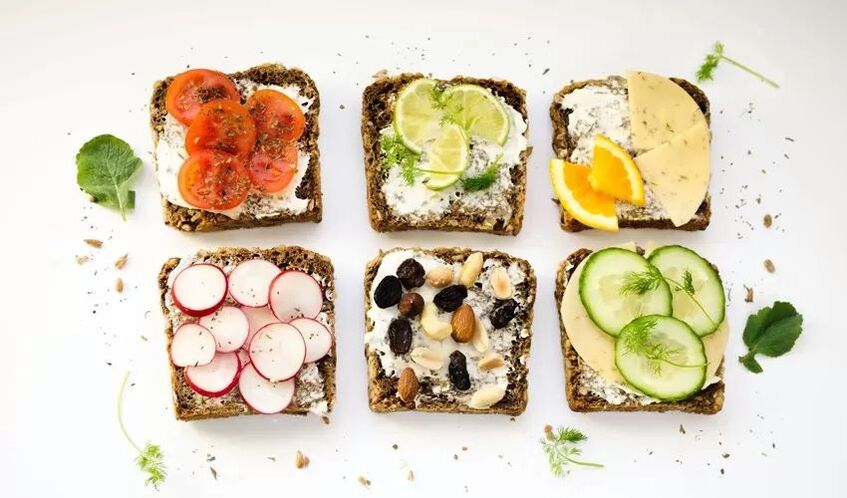
Foods that should be avoided
Some foods go against the principles of healthy eating. It is necessary to exclude them from the diet or reduce their use to a minimum. Including:
- Purchased canned goods. To keep meat, fish, vegetables and legumes long, manufacturers add dyes and preservatives, a lot of salt and vinegar to them. Home canning should be preferred, but you shouldn't even take it away.
- Mayonnaise sauce. Much loved, cheeses, garlic, spices and other sauces are made with mayonnaise. This sauce does not add any benefit to the dish.
- Bacon. When smoked meat, fish people put a lot of salt. Eating such foods puts a burden on the kidneys.
- fried foods. Often they are cooked using low-quality oil, resulting in excess weight.
- Carbonated sweet drinks. They contain a lot of sugar, which is stored in the body in the form of extra pounds.
- Candy. These are called "fast" carbohydrates. If they are not consumed immediately, they will turn into excess weight.
How to make a reasonable nutritional menu, what to keep in mind
To make a properly nutritious diet, you need to take into account all your characteristics. There is no common menu, just as no two people are alike. For example, the standard menu will not be suitable for people with gluten intolerance, as it contains it. First, you need to identify the limitations that the individual patient may impose, and observe them, tailoring the menu for yourself. Consult your doctor or dietitian.
calories- This is the amount of energy formed during the breakdown and processing of food. It ranges from 1800 to 3000 kcal per day, depending on: age, lifestyle, metabolic rate.
If you lead an active lifestyle and play a lot of sports, your menu will have more calories due to protein-rich foods than the average person - for active muscle growth and maintaining a fast metabolismfast.
In contrast, with a sedentary lifestyle, you need to reduce the ratio of carbohydrates and unhealthy fats in order not to gain weight, because the excess calories consumed are not burned.
The approximate ratio of substances for the day is:
- Protein - 25-35%
- Fat - 25-35%
- Carbohydrates - 30-50%
Proteins are polymeric nitrogenous substances consisting of amino acid residues linked together by peptide bonds.
By origin, proteins can be divided into animal and vegetable. Animal protein sources include all meat products, fish, eggs, fatty cheeses. Plant proteins are found in green vegetables, vegetables, algae, legumes, nuts and seeds.
General recommendations for protein intake- 1-2 g / kg of body weight. That is, if your weight is around 60 kg, you need 60-90 grams of protein, half of which should come from plant protein.
Also, an important point - excess protein in the diet can lead to quite sad consequences - this is a huge burden on the liver, kidneys and the detoxification system in general.
Fatare organic compounds consisting of esters of glycerol and fatty acids. Fat is very important for us, especially for women. And we, as usual, if we go on a diet, we reduce fat consumption first.
Fats are divided into saturated and unsaturated, which are divided into monounsaturated and polyunsaturated, respectively. Saturated fats include all animal fats, butter, and coconut oil. Unsaturated fats are all vegetable fats, avocados, nuts, olives, seeds, fish and seafood.
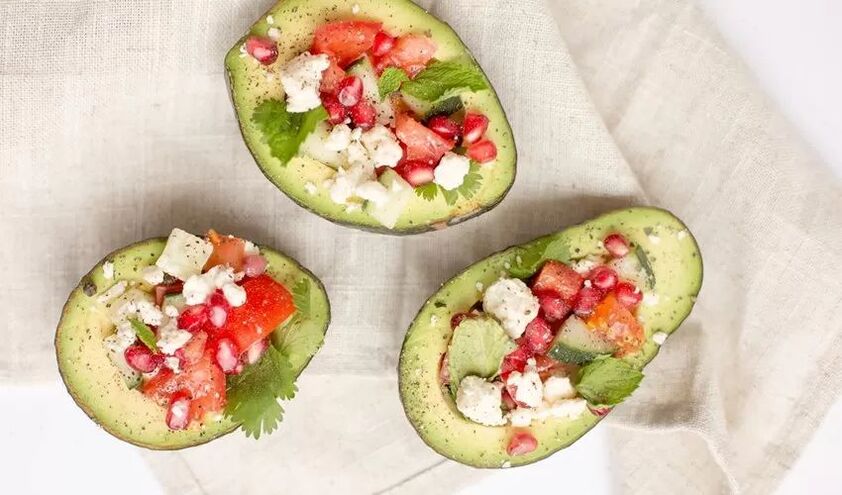
It is important to keep an eye on the ratio of saturated and unsaturated fats, as usually the preference is in favor of fat first, although the opposite is better since unsaturated fats are the basis of all. cell membranes.
The norm of fat for an adult is 1. 5-2 g/kg.
When eating fats, note the ratio of Omega 3 to Omega 6, ideally 5/1. This means that Omega 3 fatty acids in the diet should be more. The Western diet contains no omega 3 fatty acids and contains too many omega 6 fatty acids compared to the diets that humans have evolved and genotyped for. Excess omega 6 polyunsaturated fatty acids (PUFAs) and the very high omega 6 / omega 3 ratios found in today's Western diets contribute to the pathogenesis of many diseases, including cardiovascular disease. , cancer, inflammatory diseases and autoimmune diseases, while increasing the concentration of omega 3 PUFAs with inhibitory effect.
Carbohydratesare inorganic compounds containing carbon (C) and hydroxyl groups (OH). Carbohydrates serve as the main substrate for energy production in our body. In addition, carbohydrates are the most important components involved in the digestive process, stimulating the activity of the large intestine.
Carbohydrates can be divided into simple and complex. Simple carbohydrates are white crystals dissolved in water that have a sweet taste. They have a high glycemic index and significantly raise blood sugar levels. These include all products made from white flour, pasta, preservatives, jams, honey, sugar and some dairy products. Complex carbohydrates, in turn, have a mechanical effect on the intestines, without causing significant increases in insulin and blood glucose. Good sources of complex carbohydrates are grains, vegetables, fruits, berries, and legumes.
Carbohydrate absorption rate is 3-5 g/kg body weight. With moderate and high physical activity, the need can increase to 7 g/kg body weight.
The following are examples of the average daily nutritional intake for children, women, and men. In each case, you need to adjust your activity level and preferences. People should avoid large amounts of sugar, soda, flour, convenience foods, and fast foods. You need to eat small meals up to 4-5 times a day and take the main amount of food for half a day.
Women
On average, a woman needs to eat about 1800-2000 kcal. Women have a slower metabolism than men, so they gain weight faster. At the same time, the development of muscle mass is difficult, unlike men.
During pregnancy, there is the active development of another organism, and in some respects you really need to "eat for two". The calorie content of a pregnant woman's diet should be from 2500 to 3500 kcal to have enough nutrients for the growth of the baby and lactation later. Otherwise, the embryo will "take" what it needs from the mother's own body, destroying the teeth and reducing the overall weight.
Man
In men, the metabolism is much more active, in essence, there is more muscle tissue that requires active nutrition with protein-rich foods. The average man eats about 2000 - 2900 kcal per day. The calorie content of food increases especially during adolescence, during periods of rapid muscle growth and growth.
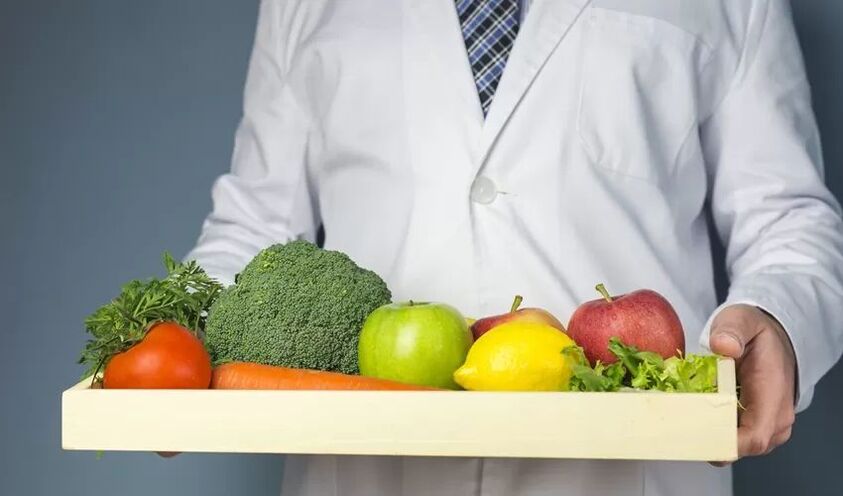
Kids
Throughout life, a person develops actively and develops only in childhood. Therefore, the calorie content of a child's food should increase about every six months. When practicing sports, the coach will help to adjust the norm, taking into account the load, and if the child is prone to obesity or underweight, the pediatrician and nutritionist will help. Each age has its own norms, depending on the needs at the present time. After 12-13 years, the calculation is almost the same as for an adult, taking into account active sexual development.
It is also necessary for the proper distribution of proteins, fats and carbohydrates throughout the day.The basic distribution rules are as follows:
- Breakfast- complex carbohydrates. The optimal solution is to drink cereal. However, do not forget that breakfast, in addition to complex carbohydrates, should include protein and fat for a balanced diet. Porridge can be supplemented with oils, can eat an egg or two.
- Dinnercomplex carbohydrates, white meat and vegetables. Perfect for stews with salads.
- Dinner- poultry, fish, eggs. Reduce the amount of carbohydrates consumed in the evening by adding more protein. Carbohydrates are needed for energy, proteins for cell and tissue regeneration.
- Eliminate the use offast carbohydratesafter 16. 00.
- Snacks included, if it is difficult to tolerate the gaps between main meals, fat is best.
Plan the menu to have a reasonable nutrition
Try to make the right menu yourself. Feel free to include in your diet what you love, remembering only the right amount of food in servings, as well as the correct BJU ratio. To do this, you can use examples of ready-made menus, which are widely and diversely presented on the Internet.
Breakfast
Try not to skip breakfast. It is he who plays an important role in good health throughout the day.
Sample breakfast menu:
- Porridge + fruit or nuts + honey.
- Omelette + cheese + rye bread.
- Cheese + fruit + honey.
- Oatmeal.
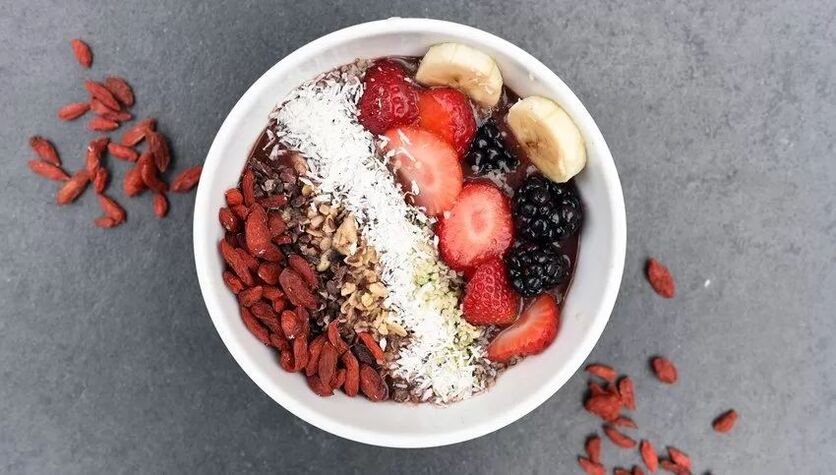
Dinner
Lunch is traditionally the main part of the daily diet in Russia. By skipping lunch, you can cause increased hunger in the evening, after which it will be difficult to eliminate overeating.
Sample lunch menu:
- Meat, fish + garnish + vegetables.
- Vegetable soup + meat, fish.
- Vegetable stew + meat, fish.
Mandatory components of a healthy lunch are complex carbohydrates and proteins.
Dinner
It is generally accepted that a full dinner should be no later than 2-3 hours before bedtime. But skipping dinner can affect sleep, increasing feelings of hunger.
Sample dinner menu:
- Chicken, fish + vegetables.
- Vegetable salad + eggs.
- Vegetable.
- Vegetable salad with quinoa or other grains.
Snacks
If you struggle with three clean meals a day, you can and should add snacks. Fatty snacks, such as nuts, are best.
The secret of proper nutrition
In order for proper nutrition to easily come into life and become an integral part of it, it is necessary to pay attention to the diversity of the diet. You can purchase a recipe book with photos and step-by-step instructions. Recipes are available on thematic websites. Here are some interesting options.
Protein pancakes
The fastest breakfast is protein or protein pancakes. Even a novice cook can cook them.
Element:
- dry protein mix for baking - 100 grams;
- any milk - 100 ml;
- sugar substitute or berry syrup;
- any fruit or berry for garnish, serving.
Mix ingredients until smooth. Bake the cake in a dry pan without adding oil.
Curd dessert with fruit and gelatin
The students' favorite dessert is cheese sticks with fruit. Baby will be able to replace sweets, candies, cakes. It's very easy to make and doesn't even need to be baked in the oven.
Element:
- fat-free cottage cheese - 200 grams;
- low-calorie sour cream or Greek yogurt - 100 grams;
- sugar or honey substitute to taste;
- a spoonful of lemon juice;
- one bag (15 grams) of gelatin;
- 100 ml of water;
- any fruit.
Dissolve a bag of gelatin in water, let it swell. Mix it with cheese, sour cream, sugar substitute until a homogeneous mixture. You can beat with a mixer or blender. Place the fruit on the bottom of the bowl, on top - the curd layer, on top of the berries. Place in the refrigerator for an hour.
Cheesecakes with bran and banana
Another simple recipe for beginners is a simple cheesecake with banana and bran.
Element:
- fat-free cottage cheese - 300 grams;
- one egg (for protein only);
- banana;
- cereal flour - 3 tbsp;
- bran - 2 tbsp;
- a little salt;
- sweetener to taste.
Mix all the ingredients and bake in a dry pan without adding oil. The flour can be substituted with ground oatmeal in the coffee maker.
radish salad
A simple and quick dinner recipe for the beginner chef on proper nutrition.

Element:
- radish - 150-200 grams;
- a mixture of lettuce leaves - 100 grams;
- a small carrot;
- a bunch of green onions;
- three cloves of garlic;
- salt to taste;
- vegetable oil for dressing.
Finely chop vegetables and herbs, mix with vegetable oil, crushed garlic on a fine grinder.
beetroot salad
The simplest, most delicious salad, familiar from childhood is beetroot.
Element:
- boiled radish - a small one;
- two or three cloves of minced garlic;
- three tablespoons sour cream or Greek yogurt;
- Salt.
Mix all ingredients. Serve with parsley.
Salad with tuna
A good option for dinner is a salad with tuna.
Element:
- canned tuna in its own juice - a can;
- cherry tomatoes - 7-8 pieces;
- two chicken eggs;
- a cucumber;
- a light;
- lettuce leaf mixture;
- olive oil for dressing;
- a little lemon juice;
- Salt.
Chop the ingredients, mix well, season with lemon juice and olive oil.
Chicken vegetable soup
Soups must be included in the diet, especially for schoolchildren and schoolchildren. One of the simplest recipes is vegetables with chicken.
Element:
- two small potatoes;
- a light;
- a carrot;
- bell pepper;
- tomato;
- chicken fillet.
Cut chicken into cubes, boil. Add vegetables, salt to the broth, cook until tender. When serving, you can garnish with herbs.
Carrot Porridge
In the TOP ranking of the most interesting dishes for proper nutrition, carrot soup takes the top position. Most people are skeptical about it. It is believed that such food cannot be delicious. However, after making carrot soup properly once, many people still include it in their diet.
Element:
- three large carrots;
- two potatoes;
- a spoon of butter;
- a light;
- three cups of chicken broth or water;
- salt, spices (curry, ginger, cardamom).
Boil vegetables until soft. Beat in blender until pureed, add broth, butter, spices.
Brussels sprouts soup with cream
This soup can be cooked on the stovetop or in the slow cooker.
Element:
- chicken broth - liters;
- Brussels sprouts - 300 grams;
- a carrot;
- leeks - half a tuber;
- onion - one piece;
- two tablespoons of butter;
- two or three potatoes;
- 100 ml of cream;
- an egg;
- salt, ground black pepper, nutmeg, bay leaf.
Boil vegetables until soft. Beat in blender until smooth, add broth, cream, butter, spices.
Tomato soup
You can quickly cook tomato soup for dinner. This is a delicious, unusual, but simple and healthy dish.
Element:
- tomatoes - 1 kg;
- onion;
- a few cloves of garlic;
- cream - 100 ml;
- two tablespoons of olive oil;
- salt, oregano, basil.
Peel the tomatoes with boiling water, remove the skins and cook over low heat along with the onions. After they get a uniform consistency, add oil, spices, salt.
Light stewed cabbage recipe
You can stew cabbage in a regular skillet, slow cooker, or frying pan. This simple dish can be a side dish for dinner or a side dish for lunch.
Element:
- white cabbage - 500 grams;
- small light bulbs;
- a carrot;
- two tablespoons of vegetable oil;
- salt, black pepper.
Finely chop onion and cabbage, grated carrot. Simmer in a pan with oil and water until tender.
Grilled chicken with vegetables
The perfect lunch is grilled chicken with vegetables.

Element:
- chicken fillet;
- bell pepper;
- tomato;
- onion;
- a carrot;
- potato;
- two tablespoons of vegetable oil or low-fat sour cream.
Cut vegetables and meat into pieces, put in molds, add butter or sour cream. Bake in the oven until the cake is done, about 30-40 minutes.
Chicken fillet with mustard sauce
This option is suitable not only for daily dinners but also for large parties.
Element:
- chicken fillet - 500 grams;
- a carrot and onion;
- three tablespoons low-fat sour cream;
- two tablespoons;
- two teaspoons of flour;
- a cup of boiling water;
- a little vegetable oil.
Marinate the meat in advance with sour cream and mustard, leave for an hour and a half. Fry carrots and onions in a pan, add meat, boiling water. Simmer until done.
Pumpkin stew
A delightful option for dinner or lunch is a stew with zucchini.
Element:
- pumpkin;
- a light;
- a bell pepper;
- tomato;
- two or three eggs;
- 200 ml of kefir or low-fat sour cream;
- some cheeses with low fat content;
- salt, pepper, herbs to taste.
Cut vegetables into thin strips. Arrange in layers, spread with sour cream or kefir. Bake in the oven for about 40-50 minutes. Sprinkle with cheese and herbs before serving.
Dietary paella with chicken
Usually paella is cooked with pork. It turned out to be quite fat, heavy. A healthy but equally delicious alternative is chicken.
Element:
- chicken fillet;
- a carrot;
- onion;
- rice (polished or brown) - one glass;
- water - two glasses;
- two tablespoons of vegetable oil.
Cut chicken breast into cubes, saute with onion and carrot over low heat. Pour a glass of rice, pour water and simmer until soft.
Proper nutrition is a varied, delicious, and healthy diet that not only brings a beautiful body shape, but also brings flexibility and good health.
































